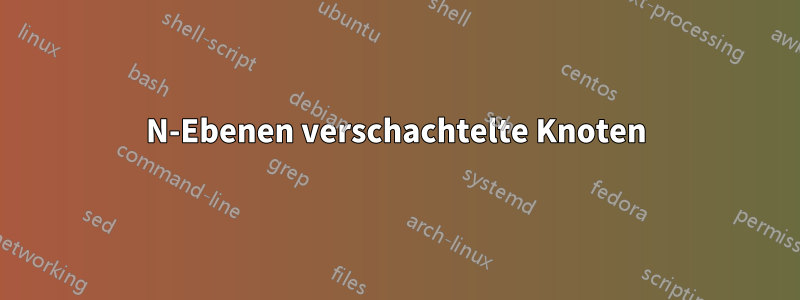
ich lese dasFrageaber ich habe nicht verstanden, wie ich den Vorgang mehr als einmal wiederholen kann. Ich mache ein Beispiel: Ich hätte gerne eine große grüne Box, die zwei Kopien der hellblauen Box enthält, die in der anderen Frage gezeigt wurde. Sie enthält wiederum die blauen Boxen mit den Zahlen.
Ich fange damit an
\documentclass[10pt]{article}
\usepackage{tikz}
\usetikzlibrary{backgrounds,fit}
\begin{document}
\begin{tikzpicture}[outer sep=0.05cm,node distance=0.8cm,]
\tikzstyle{bigbox} = [draw=blue!50, thick, fill=blue!10, rounded corners, rectangle]
\tikzstyle{box} = [minimum size=0.6cm, rounded corners,rectangle, fill=blue!50]
%
\node[box] (11) {1};
\node[box,right of=11] (12) {2};
\node[box,right of=12] (13) {3};
\node[box,below of=11] (21) {4};
\node[box,right of=21] (22) {5};
\node[box,right of=22] (23) {6};
%
\begin{pgfonlayer}{background}
\node[bigbox] [fit = (11) (23)] {};
\end{pgfonlayer}
%
\end{tikzpicture}
\end{document}
Antwort1
Einfache Aufgabe mit matrixBibliothek:
\documentclass[10pt]{article}
\usepackage{tikz}
\usetikzlibrary{backgrounds,fit,matrix}
\tikzset{
bigbox/.style = {draw=blue!50, thick, fill=blue!10, rounded corners, rectangle},
box/.style = {minimum size=0.6cm, rounded corners,rectangle, fill=blue!50},
}
\begin{document}
\begin{tikzpicture}[outer sep=0.05cm,node distance=0.8cm]
\matrix (a)[row sep=2mm, column sep=2mm, inner sep=2mm, bigbox, matrix of nodes, every node/.style=box]
{
1 & 2 & 3\\
4 & 5 & 6\\
};
\matrix (b)[row sep=2mm, column sep=2mm, inner sep=2mm, bigbox, matrix of nodes,
every node/.style=box,anchor=west] at (a.east) {
1 & 2 & 3\\
4 & 5 & 6\\
};
%
\begin{pgfonlayer}{background}
\node[bigbox,draw=green,fill=green!10] [fit = (a) (b)] (A) {};
\end{pgfonlayer}
%
\end{tikzpicture}
\end{document}

Wenn Sie den Abstand zwischen zwei blauen Kästen vergrößern möchten, verwenden Sie Folgendes:
\matrix (b)[row sep=2mm, column sep=2mm, inner sep=2mm, bigbox, matrix of nodes,
every node/.style=box] at ([xshift=2cm]a.east) {
1 & 2 & 3\\
4 & 5 & 6\\
};

Entsprechend wechseln xshift.
Antwort2
Wie Harish erklärt hat, matrixbietet eine zwei Ebenen (innerhalb von Knoten und Matrix), aber beide werden auf mainder Ebene (Standard) gezeichnet. backgroundsDie Bibliothek führt zwei weitere Ebenen backgroundund ein foreground. Wenn Sie jedoch mehr Ebenen benötigen, können Sie diese mit definieren \pgfdeclarelayerund sie nach der Deklaration mit dem Befehl anordnen \pgfsetlayers.
Der nächste auf Harishs Beispiel basierende Code zeigt, wie beide Befehle verwendet werden.
\documentclass[10pt]{article}
\usepackage{tikz}
\usetikzlibrary{fit,matrix}
\tikzset{
bigbox/.style = {draw=blue!50, thick, fill=blue!10, rounded corners, rectangle},
box/.style = {minimum size=0.6cm, rounded corners,rectangle, fill=blue!50},
}
\pgfdeclarelayer{background}
\pgfdeclarelayer{foreground}
\pgfdeclarelayer{minusone}
\pgfdeclarelayer{minustwo}
\pgfdeclarelayer{minusthree}
\pgfsetlayers{minusthree,minustwo,minusone,background,main,foreground}
\begin{document}
\begin{tikzpicture}[outer sep=0.05cm,node distance=0.8cm]
\matrix (a)[row sep=2mm, column sep=2mm, inner sep=2mm, bigbox, matrix of nodes, every node/.style=box]
{
1 & 2 & 3\\
4 & 5 & 6\\
};
\matrix (b)[row sep=2mm, column sep=2mm, inner sep=2mm, bigbox, matrix of nodes,
every node/.style=box,anchor=west] at ([xshift=2cm]a.east) {
1 & 2 & 3\\
4 & 5 & 6\\
};
%
\begin{pgfonlayer}{background}
\node[bigbox,draw=red,fill=red!10] [fit = (a)] (A) {};
\node[bigbox,draw=red,fill=red!10] [fit = (b)] (B) {};
\end{pgfonlayer}
\begin{pgfonlayer}{minusone}
\node[bigbox,draw=green,fill=green!10] [fit = (A) (B)] (AB) {};
\end{pgfonlayer}
%
\begin{pgfonlayer}{minustwo}
\node[bigbox,draw=purple,fill=purple!10] [fit = (AB)] (AB-1) {};
\end{pgfonlayer}
\begin{pgfonlayer}{foreground}
\node[bigbox,draw=orange,fill=orange!10,opacity=.5] [fit = (a-2-2.west|-AB-1.south) (b-1-2.east|-AB-1.north)] (AB-2) {};
\end{pgfonlayer}
\begin{pgfonlayer}{minusthree}
\node[bigbox,draw=brown,fill=brown!10] [fit = (AB-2) (AB-1)] (AB-3) {};
\end{pgfonlayer}
\end{tikzpicture}
\end{document}



